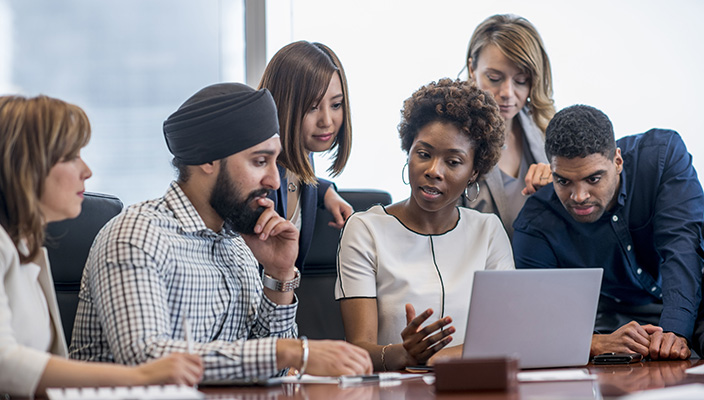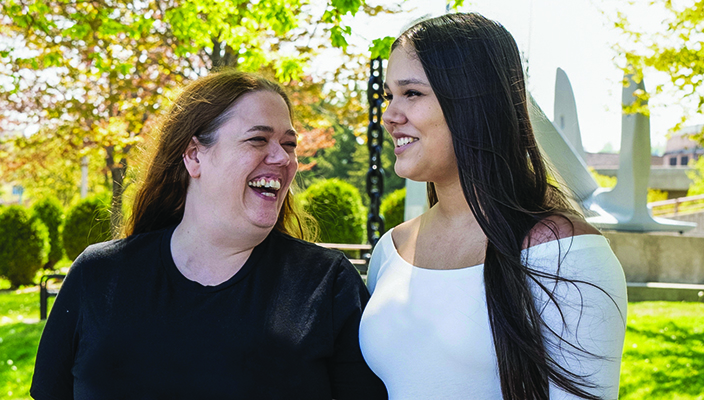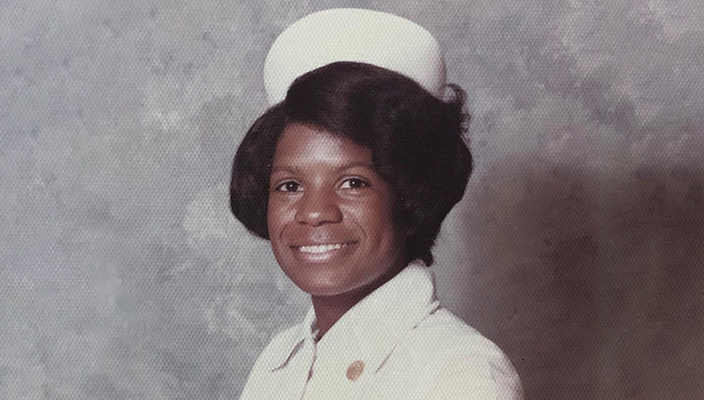You’re cooking dinner one night and observe that you’ve run out of an ingredient. Can you use something else instead? You do some quick research on Google and hypothesize that something else in your pantry could be a good substitute for what you’re missing. You decide to experiment with tonight’s dinner and see if your swap works. A taste test concludes that dinner has been saved! You share this victory with your friends and family as you enjoy your meal.
Congratulations — you’ve just used the scientific method!
A Quick Science Lesson
The example above is simple. But it really does demonstrate the scientific method. It’s the same logical process that’s guided science from ancient times to now. And it’s key to how researchers use data from the All of Us Research Program.
You may have learned about the scientific method in school. As shown above, it involves six steps: 1) Observe, 2) Research, 3) Hypothesize, 4) Experiment, 5) Conclude, and 6) Share Results.
An observation can use any of your five senses — sight, hearing, taste, smell, or touch — to show you something about the world. That observation can then lead to questions. For example: How does something work? Why does it work that way? And what change could make it better?
The questions then need to be researched. Research can give you important clues for how to answer them.
Research also helps you develop a hypothesis. A hypothesis is a prediction of the answers to your questions, based on your research. Research makes a hypothesis much more than a guess. In the cooking example above, it’s the difference between, “I think I can add this ingredient” and “I think I can add this ingredient, based on the cookbooks that say this ingredient will give good flavor to this dish.”
Next comes the exciting part: the experiment. An experiment is planned and controlled. Ideally, only one element is changed, and all the other conditions are kept the same. This makes it easier to understand your results. If you want to know whether your ingredient swap worked, you can’t change everything — the cooking temperature, the cooking method, and the other ingredients — all at the same time.
The next step is to analyze the data you’ve gathered from your experiment. You may find patterns in the data that help you draw conclusions about your hypothesis.
Then you can share what you found, whether you proved your hypothesis right or wrong.
The Real-World Scientific Method
So how does this classroom breakdown compare to science in the real world? Well, the scale is much grander in a real lab. But much of the process is the same.
Observations inspire a lot of scientific research. For example, All of Us researchers may notice that lots of people have a disease. That observation drives research on how that disease spreads and causes sickness. In the future, that research shapes experiments that develop and test new treatments for the disease.
But treating a disease is no easy feat. Before you get to that point, a series of smaller tests is needed to get closer and closer to a disease’s cure. The research, hypothesis, and experiment steps may have to be repeated many times before you come to a final conclusion.
Those repeating steps apply to everyday life, too. If your ingredient swap didn’t work the first time, you might try cooking the recipe again with different amounts of the ingredient. Or maybe some people like the swap while others don’t. You may need to try different recipes for different dinner guests to really understand how the ingredient could be used. You could say you’re taking a “precision cooking” approach!
Repeating steps of the scientific method also lets science build on itself. For example, All of Us researchers may find that treatment for a disease does not work for everyone. Or they may see that certain groups of people weren’t included in the studies that helped develop those treatments. This observation may lead researchers to ask about better treatments that actually work for everyone. And those questions spark new efforts to gather data and add to what we previously knew.
Sound familiar?
All of Us: Part of a Scientific Cycle
All of Us helps researchers using the scientific method to make discoveries. By gathering samples (blood, saliva, and urine), electronic health records, and survey responses from many different people, we help them ask questions and find answers about health and disease. And as researchers find relationships within the data, those findings could inspire other studies to explore those relationships further and further.
Researchers are using All of Us data for all kinds of studies like this. These studies range from teaching us about heart health for different groups of people to uncovering more genetic variants for the study of disease. Studies like these could speed up health research and the process of scientific discovery.
But remember: The scientific method isn’t just a series of steps to get to the “right” answer. It’s more like a never-ending cycle. And each turn of the cycle brings us to a “better” answer. All of Us is helping move that cycle along.
Also remember: Just because a new answer is “better,” the old answers aren’t pointless. Sometimes they helped us get to a more accurate answer. The beauty of the scientific method is that there’s always the potential to improve.
That applies to the health of future generations — or simply making a nice dinner.










